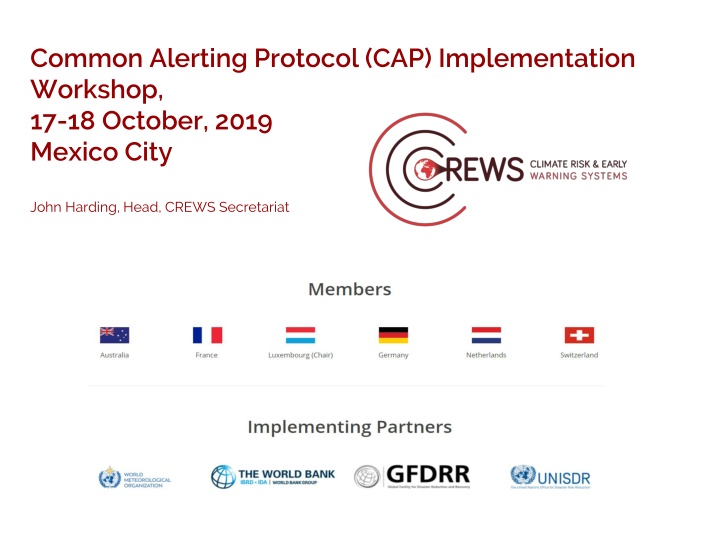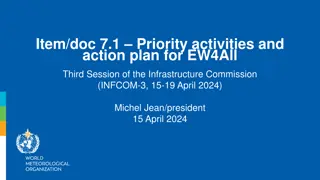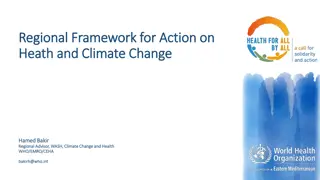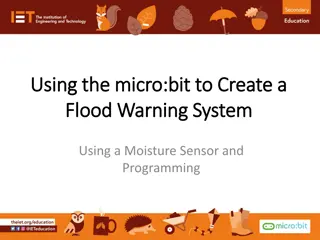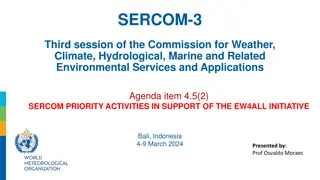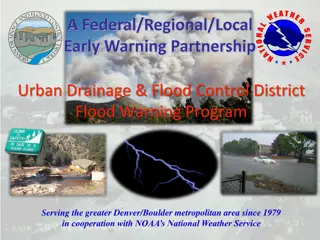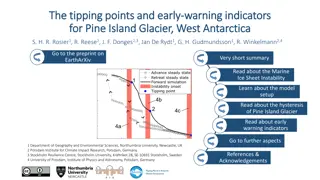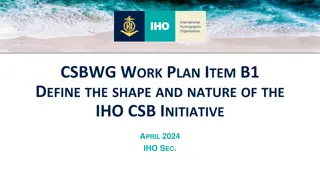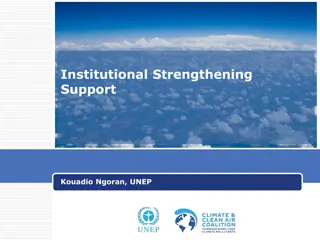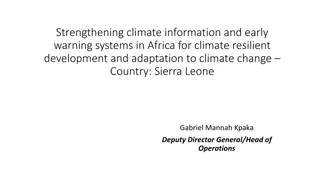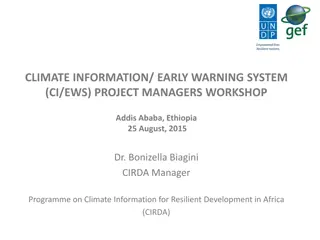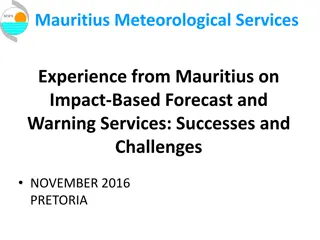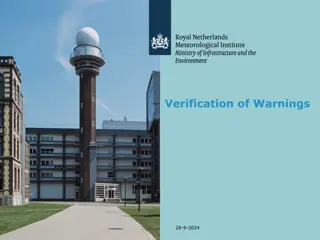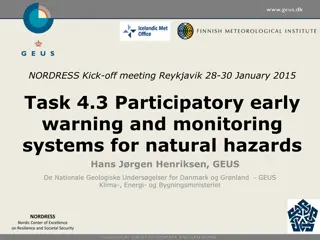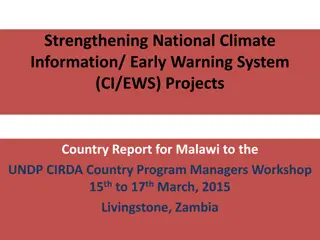Enhancing Early Warning Systems: The CREWS Initiative in Action
The CREWS Initiative supports Least Developed Countries and Small Island Developing States in building multi-hazard early warning systems to protect lives and assets. Through workshops, training, and capacity building programs, CREWS focuses on improving service delivery, strengthening communication protocols, and enhancing disaster preparedness. With a vision to integrate the Common Alerting Protocol into all investments, the initiative aims to ensure that countries are well-equipped to respond effectively to natural disasters.
Download Presentation

Please find below an Image/Link to download the presentation.
The content on the website is provided AS IS for your information and personal use only. It may not be sold, licensed, or shared on other websites without obtaining consent from the author.If you encounter any issues during the download, it is possible that the publisher has removed the file from their server.
You are allowed to download the files provided on this website for personal or commercial use, subject to the condition that they are used lawfully. All files are the property of their respective owners.
The content on the website is provided AS IS for your information and personal use only. It may not be sold, licensed, or shared on other websites without obtaining consent from the author.
E N D
Presentation Transcript
Common Alerting Protocol (CAP) Implementation Workshop, 17-18 October, 2019 Mexico City John Harding, Head, CREWS Secretariat
CREWS? What is that? Do I follow them on Twitter ? Supports Least Developed Countries (LDCs) and Small Island Developing States (SIDS) Significantly increases the capacity to generate and communicate effective, impact-ased,multi- hazard, gender-informed early warnings @CREWSinitiative Protects lives, livelihoods, and assets
Where we work? CREWS Project Countries Pipeline Countries Afghanistan Burkina Faso Caribbean Region covering CARICOM States and territories Chad Mali Niger Democratic Republic of the Congo Pacific Region covering Fiji, Kiribati, Marshall Islands, Solomon Islands, Tuvalu and Vanuatu Papua New Guinea Togo West Africa Region Benin Bhutan Curacao Ethiopia Haiti Indian Ocean Region Madagascar Mozambique Myanmar Sierra Leone
Scale of investments in Hydromet Programmes (World Bank, December 2018)
Comprehensive approach to country projects Detection, monitoring, analysis and forecasting of the hazards and possible consequences Disaster Risk Reduction Preparedness and response capabilities Warning dissemination and communication
CREWS reviews progress against its Six Program Outputs 1. NMHS s service delivery improved, including service delivery strategies and development plans; 2. Risk information to guide early warning systems developed and accessible; 3. Information and communication technology, including common alerting protocols, strengthened; 4. Preparedness and response plans with operational procedures developed and accessible; 5. Knowledge products and awareness programmes on early warnings developed; 6. Gender-sensitive training, capacity building programmes provided.
Our Vision Every CREWS country investment to include a CAP component (workshops training TA); Link the CAP to the operational procedures, preparedness and response plans developed under CREWS; Report regularly on progress (a CAP section in the CREWS Annual Reports?); Application of CAP is measured across all Least Developed Countries and Small Island Developing States; Move from stand-alone agreements with cell phone companies to cooperation with ITC regulators.
@CREWSinitiative Thank You! Contact: John Harding Climate Risk and Early Warning Systems (CREWS) Secretariat E: jharding@wmo.int T: +4122-730-8373 M: +4179-444-4130 Skype: johnalexanderharding
